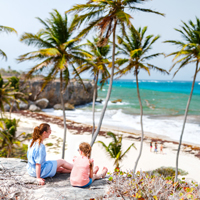1. Understanding the Driving Culture
Driving in Wollongong is generally considered to be quite pleasant. The roads are well-maintained and the traffic is not as congested as in larger cities like Sydney or Melbourne. However, like anywhere, it can get busy during peak hours. Australians drive on the left side of the road, so if you’re from a country where driving is on the right, it might take some time to adjust.
2. Car Recommendation
As for the type of car, it really depends on your personal needs and preferences. If you’re planning on exploring the surrounding areas and going on road trips, an SUV or a 4WD might be a good option. However, for daily commuting, a smaller, fuel-efficient car would be more practical and economical.
3. Parking in Wollongong
Finding parking in Wollongong is generally not a problem, especially compared to larger cities. There are plenty of parking spaces available in the city centre and in residential areas. However, parking can be expensive in the city centre, so it’s worth considering this when choosing where to live or work.
4. Driving with an International License
Foreigners can drive in Australia with an international license, but only for a limited period. If you hold a temporary visa, you can drive on your overseas license for the duration of your stay. If you’re a permanent resident, you can drive on your overseas license for three months, after which you’ll need to get an Australian license.
5. Getting an Australian Driver’s License
To get an Australian driver’s license, you’ll need to pass a knowledge test, a practical driving test, and an eyesight test. The process can vary slightly depending on which state you’re in, so it’s best to check the specific requirements on the New South Wales government website. If your overseas license is not in English, you’ll also need to provide an official translation or an International Driving Permit.
6. Be Aware of Speed Limits and Road Rules
Speed limits are strictly enforced in Australia, and there are heavy penalties for speeding. The standard speed limit in residential areas is 50 km/h, unless otherwise signposted. On highways, the limit is usually 100 km/h or 110 km/h. It’s also important to be aware of other road rules, such as not using a mobile phone while driving, and always wearing a seatbelt.
7. Watch Out for Wildlife
One unique aspect of driving in Australia is the wildlife. It’s not uncommon to see kangaroos, wombats, or other animals on the road, especially in rural areas and at dawn and dusk. Hitting an animal can cause serious damage to your car and harm the animal, so always be vigilant and reduce your speed if you see wildlife near the road.


